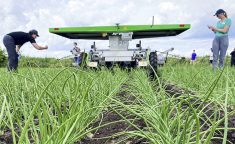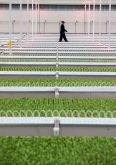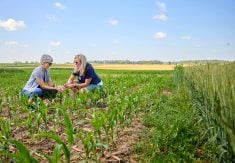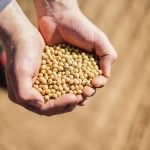Imagine a consumer who really likes a steak reaching back through the supply chain to give the farmer who raised that beef a tip. Or, being paid immediately for grain delivery.
Those are a couple of the ideas behind Grain Discovery, a Prince Edward County agriculture start-up company planning to use blockchain technology to make the agriculture supply chain more transparent and efficient. They are part of a movement to securing data shared online in ways that haven’t been possible before.
Why it matters: Blockchain technology is seen as a means to make agriculture supply chains more efficient. The result could be more money in the supply chain, the potential for premiums for farmers and a big opportunity for agriculture to tell its story.
Read Also
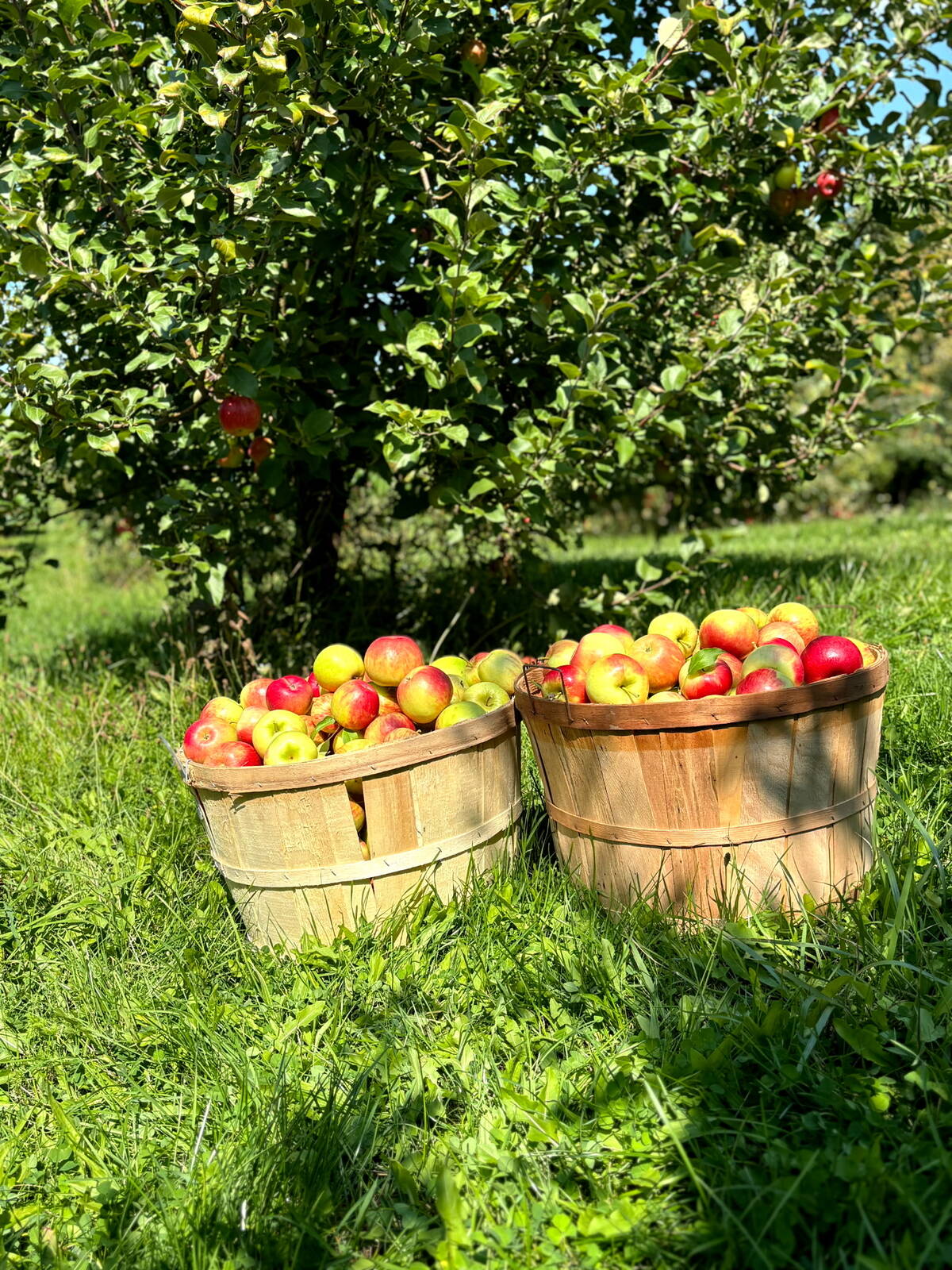
Farmers taking to social media to spread the word about the cost of farm thefts
A rash of farm thefts in Ontario have left farmers looking for new ways to help customers understand the cost of stealing goods.
What is blockchain?
Blockchain is a back-end technology that runs on the internet and allows for more secure and trusted transactions. IBM describes blockchain as “a cryptic unalterable ledger for recording history of transactions. It is not centralized, but distributed among every member of the blockchain,” said Sanjeev Gill, the national industry executive for research for IBM Canada.
The distribution of information among all the members of the supply chain means that the information built into the system can’t be changed. That means it will be irrefutable, as it is housed in multiple places.
Think of an Excel file, or a database file that can be added to, but the data is secure and sharable by partners in the chain.
The technology was developed by people aiming to create a cryptocurrency called Bitcoin. Cryptocurrencies are now worth billions of dollars, but the greater impact will be the ability to secure data and financial ledgers. Transactions can take place using regular dollars, as well.
“I make a sort of joke in presentations,” said Ruairi Hanafin, co-founder of Grain Discovery and chief blockchain architect. “If you look at a clay tablet from Mesopotamia 4,000 years ago, you can compare it to a grain contract in North America. The point is that grain marketing and grain trading are closer to the clay tablet than to Amazon or eBay.”
“Agriculture is incredibly advanced,” he said, but there has been a lack of incentive to improve the efficiency of processes, especially relating to contracting and sales settlement.
The increasing use of sensors and digitization of processes on farms and in the agriculture supply chain, connected via blockchains, will mean less paper, more accuracy and quicker turnaround and traceability.
Malcolm Campbell, vice-president of research at the University of Guelph, says that at a grain facility, samples of grain being processed are usually done manually and recorded on paper. That data may be put into a database, but it would have to be typed in. In the future a digital probe could put the moisture sample directly into a blockchain ledger system. The data would be instantly available and would follow that shipment forever.
The provenance or origins of produce, whatever it is – meat, milk, vegetables, fruit or soybeans – has value these days to consumers, and Hanafin and his colleagues want to use their blockchain-based system to capture that value. A British blockchain and food company has even called itself Provenance.
Grain Discovery’s platform will give farmers the chance to offer their produce, at a price of the farmer’s choosing, and then secure automated systems can match them with buyers. Settlement can be immediate. Banks wouldn’t necessarily have to be involved due to the security of a blockchain system, although Hanafin says they are working with all the members of the value chain who bring value.
Prince Edward County farmers will have the chance to try out the Grain Discovery system this harvest, at no charge. Hanafin said they hope to build the system out across Canada and then to other countries after that.
They have already had discussions that would involve a value chain for coffee growers in Colombia that would allow a coffee drinker in Toronto to see on their phone the steps in the production process right back to the grower, with the potential of sending money to the grower.
How much change will farmers actually see?
Campbell said most farmer experiences will be seamless and will be similar to their current digital experiences. The blockchain behind the transactions just might make the opportunities different.
“They won’t detect it as blockchain, but it will be a hyper ledger in the background,” he said.
There is also the potential to increase the amount of data being gathered by farms to be managed by blockchain security. Dairy farms, said Campbell are a good example.
“There’s the example of someone using DeLaval or Lely robotic data and using it in real time and loading into a blockchain,” he said.
That data could securely be shared with advisors, or eventually with processors and consumers.
“There are a multitude of devices providing data on the farm,” said Gill. He mentioned imagery of crops from satellites, drone images and private weather stations generating a lot of data.
“It represents a big data challenge,” he said. “That’s a core interest to IBM across all of our sectors.”
Canada is set to be a leader in managing supply chains with blockchain, said Campbell. There are already successes in Canadian marketing that can be moved onto a blockchain to create further trust and security.
The Canadian Identity Preserved Recognition System (CIPRS), a supply chain management system with buy-in from regulators, farmers, suppliers, marketers and buyers, has put Canada at the forefront export of identity preserved soybeans. It’s a system built on trust. Campbell said CIPRS could be enhanced with blockchain.
He said commodity organizations, especially those interested in export markets, should be investigating how blockchain can help assure their supply chains.
John Baker, director of brand management and business development for the Ontario Corn Fed Beef Program, says they are looking closely at blockchain.
“We have yet to have any enquiries from the marketplace, but we are looking at how we can use blockchain technology to add value to Ontario Corn Fed Beef. Personally I see tremendous opportunity,” he said.
Food traceability
The leading edge of blockchain use in the food sector is in traceability. Walmart is working with IBM’s Food Trust to create a secure system to trace mangoes back to their origin.
“Information put into a blockchain network and supply chain is always there, it is irrefutable,” said IBM’s Gill. “It drives a level of transparency unlike ever before.”
The Walmart system has made tracing details through the system a job that takes seconds, not days.
That will have implications for public health and confidence in the food system. A romaine lettuce recall earlier this year took weeks to track and clear to safety. A smarter, trusted system to trace the lettuce could have seen those weeks reduced to minutes.
The potential of blockchain may feel overblown, as there remains a lack of success stories that show the way forward.
If Canada wants to maintain its leadership in agriculture and food it needs to lead in exploring blockchain, said Campbell. In the future systems like CIPRS will be challenged, he said, and blockchain has a role in meeting those challenges.
“Where is the proof that you actually did this? You can load it all into a blockchain. It will be auditable and future proofed to make sure farmers maintain the market they have for that product.”
Imagine a consumer who really likes a steak reaching back through the supply chain to give the farmer who raised that
beef a tip. Or, being paid immediately for grain delivery.





